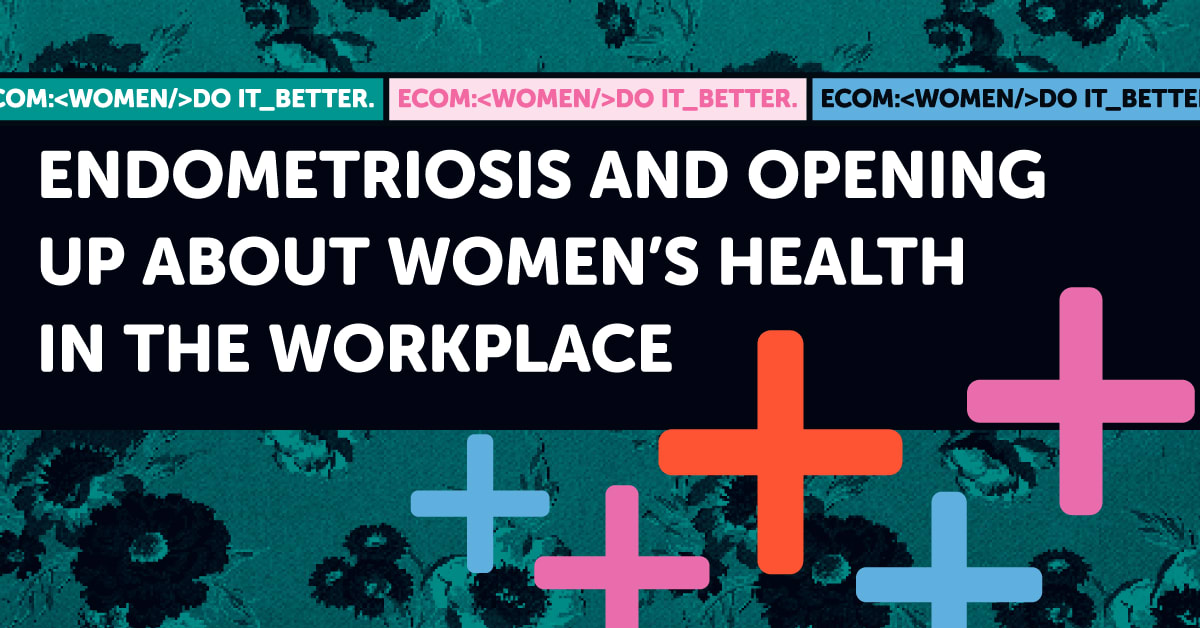The Women’s Domain: Endometriosis and Opening Up About Women’s Health in the Workplace
In this candid article, Michelle shares her journey of being diagnosed with Endometriosis and Adenomyosis shortly after starting her job. Through her experience, she advocates for open conversations, flexible policies, and a stigma-free environment where employees feel empowered to seek support.

In November 2016, two weeks into starting my job at 5874 Commerce, I started to experience lower abdominal pain. I remember sitting in our old office, hunched over; one hand gripping my right hand side and the other typing away trying to carry on as normal. I had no idea what could be causing the pain. Days and weeks went by, the pain didn’t disappear and gradually got much worse.
I opened up about what I was experiencing to our co-founders, Rupert and Richard. While the doctors weren’t quite sure what was causing the pain, it became apparent that it was a gynaecological issue. Not what you want to be telling your male bosses barely a month after starting your new job. To my surprise, they were both very accommodating and asked me what I needed from them. I say I was surprised for a few reasons. Firstly, they didn’t really know me; I was a fresh-faced, 20-something entering the world of ecommerce for the first time. Secondly, I had never worked somewhere that didn’t immediately interrogate employees who became unwell; the assumption being they’re trying to ‘pull a sickie’. Also, despite being in excruciating daily pain, I felt that because I couldn’t necessarily prove it, that I wouldn’t be believed. Their reaction was a surprise, but it shouldn’t have been.
The Diagnosis
A few months after the original pains started, I had surgery. I won’t go into the gory details of what they found, but following that surgery I was diagnosed with Endometriosis and Adenomyosis – both chronic, painful debilitating conditions. Although there had been some pain relief following surgery, there was always a possibility it would come back, not to mention the many other symptoms experienced with these conditions.
I have always been quite open to talk about my experience. I understand that a lot of women’s health issues, especially those centred around menstrual health, can be quite taboo. A subject you must definitely not bring up in the workplace, especially one occupied by men. For me personally, if I had kept quiet about what I was going through, I would have suffered much more, and so would have my work. By speaking about it, we were able to come up with a plan that worked for me. I was able to work from home occasionally, attend appointments and was given as much support as I needed. After speaking with other chronic pain sufferers, some who had lost their jobs due to their condition, I now know this isn’t normal practice.
Women’s Health in the Workplace
The difficulty with a lot of women’s health issues is that they’re often experienced differently and individually. I would say this is where businesses can often get it wrong when a situation similar to mine occurs. Needs will vary. Yes, it’s important to put written policies in place that address women’s health issues, including menstrual cramps, the menopause and fertility, but individual assessments are also key.
It’s imperative that businesses create a work environment and culture that is free from stigma and enables all employees to thrive at work. The onus is on leadership and management to educate themselves and ensure their employees feel comfortable and have what they need in order to be productive.
Endometriosis affects 1 in 10 women worldwide.
I wasn’t the first woman to go through this and I won’t be the last.
At the time of me joining 5874, we were a very small team with only men in leadership. This isn’t an unusual situation and something many women will have experienced. Not everyone will want to share what they are going through and that’s fine. The message here isn’t that every woman in the office must stand on the table and declare when she’s on her period. There’s nothing wrong with openly talking about these issues but it’s ok to keep them to yourself too.
The main argument here is that women in the workplace need to feel like they can ask for support if it’s needed. If a workplace already has policies in place, such as flexible working, they are making sure employees are aware they have that flexibility to attend doctors appointments or work from home when experiencing a flare up of symptoms.
